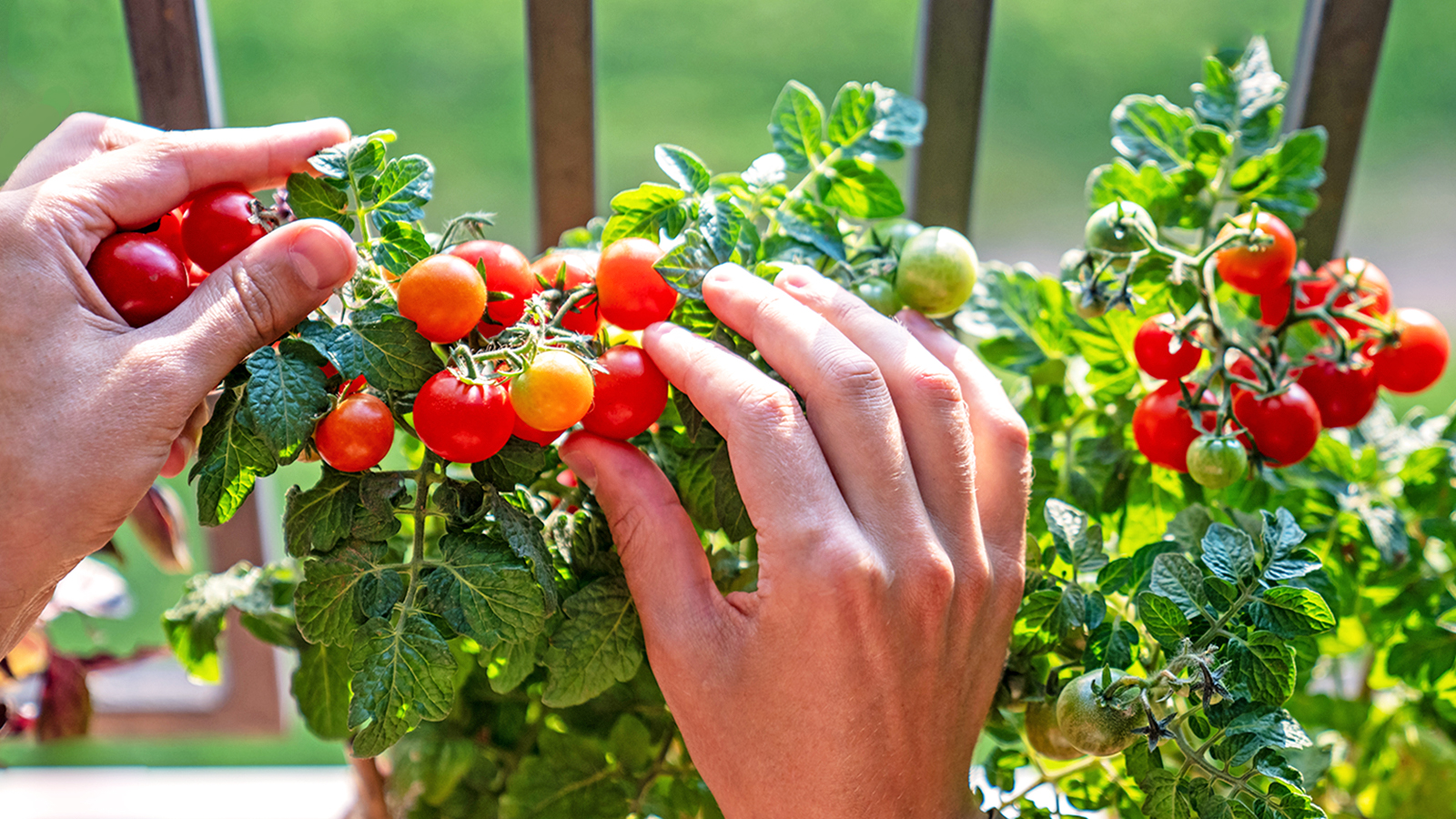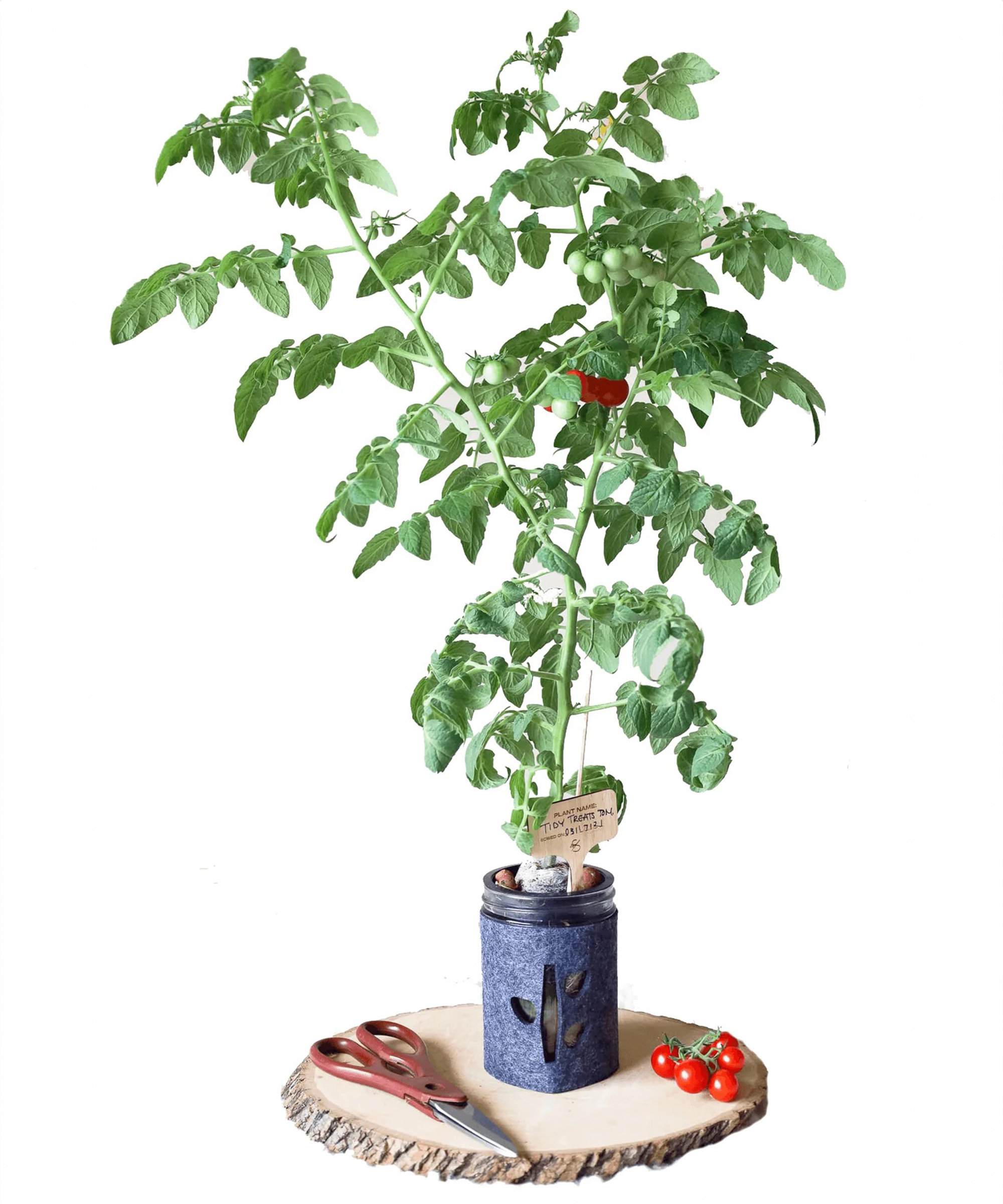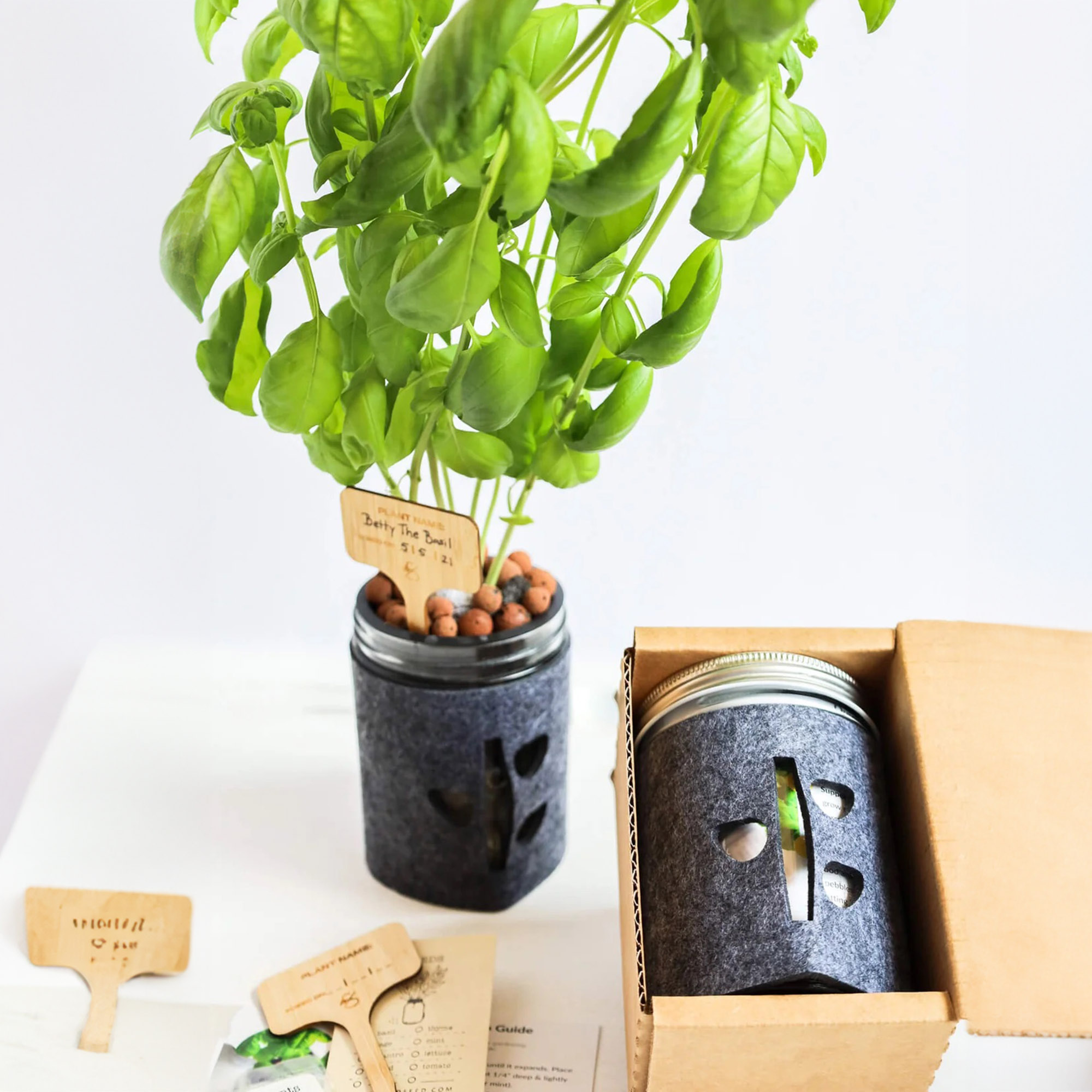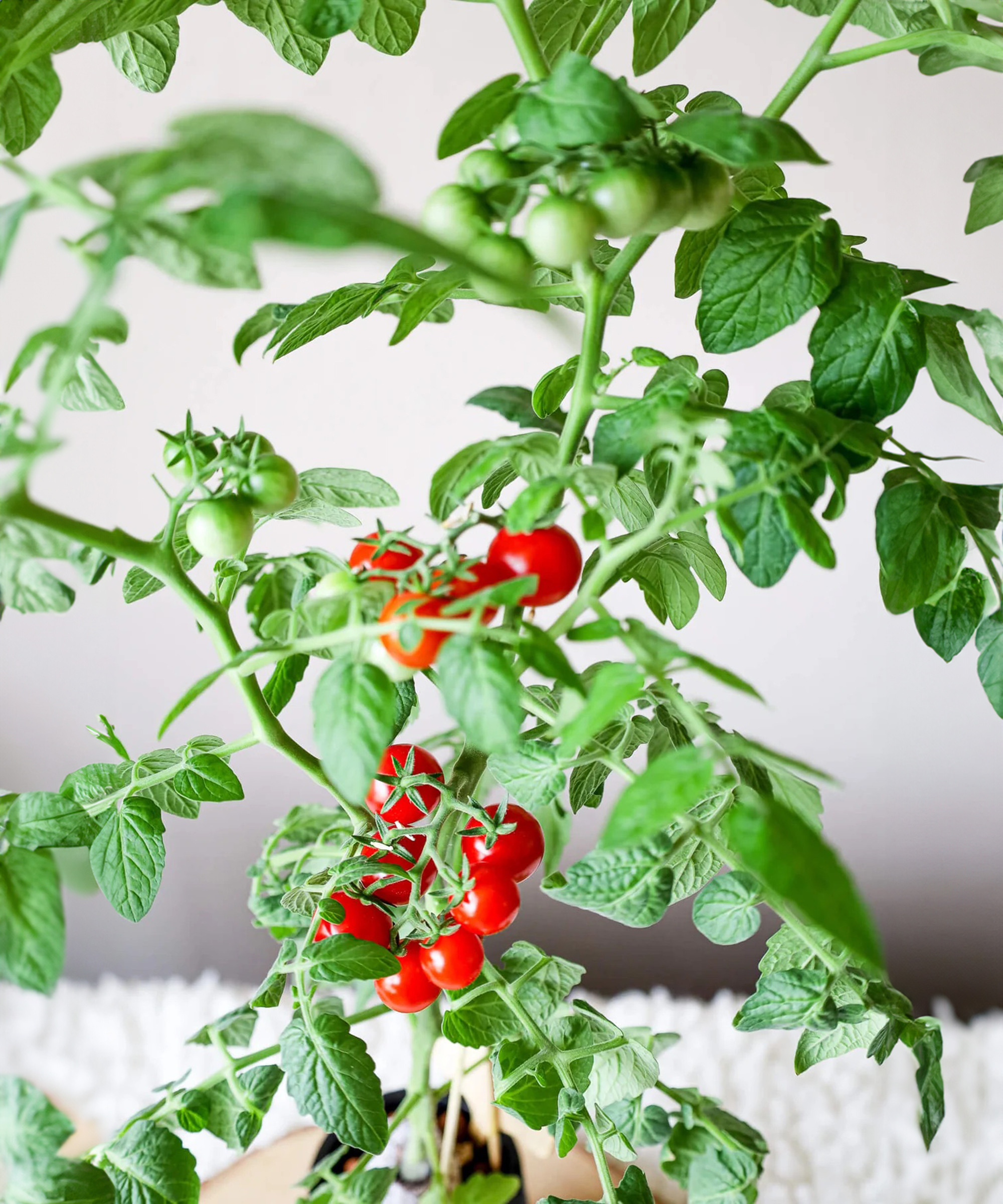How To Grow Hydroponic Tomatoes For Fresh Indoor Harvests – No Soil Required
Learning how to grow tomatoes in water is easy and allows you to harvest fresh-home-grown produce in every season without any mess.


When you think of growing edible items indoors, visions of basil, rosemary, cilantro, and other leafy herbs may come to mind. But tomatoes? Yes! An indoor tomato crop is indeed possible using hydroponic techniques. Hydroponics is the technical term for growing plants in water with a soilless medium such as clay pebbles.
When growing tomatoes indoors, the challenge is always providing enough light, but as long as you have a sunny window or use a grow light, you will be well on your way to harvesting fresh tomatoes year-round.
Reasons to Grow Tomatoes Hydroponically

Hydroponic gardening may sound like a high-tech commercial endeavor, but it’s a method used by wholesalers and homeowners alike. There are many good reasons to grow tomatoes in water:
- Year-round growing. Garden-grown tomatoes are limited by temperature and weather conditions. Grown hydroponically indoors, tomatoes can be harvested all year long.
- Less mess. Your indoor-grown tomato will not experience the muddy splashing that makes the fruits dirty. Pick the tomatoes off your hydroponic plant and enjoy!
- Fewer pests and diseases. Outdoor-grown tomatoes can be targets of cutworms, hornworms, blight, and a host of other tomato plant problems that are easily transmitted outside. These issues are much rarer indoors.
- Efficient use of resources. The tomato plants have direct access to the water and nutrients you provide in their vessel.
- No outdoor space required. Perhaps the best reason to grow hydroponically indoors is that it allows those without outdoor space to grow their own tomatoes. No garden, patio, or balcony? No problem! There's no need for any of those with this indoor option.
What You’ll Need

Growing hydroponic tomatoes in your home is much easier than growing them on a commercial scale. You won’t need the trellising, irrigation system nor the grow trays you may have seen used at such facilities. The list of supplies you’ll need for growing at home is much simpler and includes:
- A container: Use a container that is big enough to support a growing root system. A clear container will allow you to monitor root health.
- A growing medium: The roots need support from a medium such as clay pebbles or rock wool. These help keep the plants upright and also aerate the roots.
- Tomato seeds or seedlings: Since you’ll be growing indoors, you'll need compact tomato varieties. Many dwarf tomato plants are available, such as ‘Tidy Treats’, which is a type of cherry tomato that produces high yields on tabletops and in small spaces.
- Hydroponic fertilizer: A fertilizer specially formulated for hydroponic growing is recommended, and one that is specifically for tomatoes is ideal.
- A light source: Tomatoes need plenty of light – 6 hours each day or more. A window unobstructed by buildings should suffice. Otherwise, a grow light will do the trick. This lamp comes in handy when growing tomatoes during the depths of winter.
- High-quality water: Providing a source of chlorine-free irrigation water will help the plant absorb nutrients efficiently. If not possible, tap water will do.
Coco & Seed's Tomato Hydroponic Mason Jar Garden Kit, available in the Gardening Know How Shop, provides the container, growing medium, nutrients, and seeds mentioned above, plus a few other items that will help you succeed. A net pot holds the provided clay pebbles and the growing pod in which you sow seeds.
Growing directions help start you on the right foot, and a bamboo plant label distinguishes this mason jar from other Herb Kits you may purchase in the Shop. A protective cover for the 16-ounce mason jar helps keep the water cool and discourages algal growth. Just add water and light!

Experience the pleasure of growing your own produce at home with a Coco & Seed garden kit – containing everything you need for fuss-free indoor harvests.
Planting Tomatoes in the Jar
We’ll use the Mason Jar Garden Kit as an example for how to plant tomato seeds for growing hydroponically. The kit comes with seeds of ‘Tidy Treats’, which will germinate in the grow pod.
Gardening tips, videos, info and more delivered right to your inbox!
Sign up for the Gardening Know How newsletter today and receive a free copy of our e-book "How to Grow Delicious Tomatoes".
- Hydrate the grow pod until it expands. Sow the seeds about ¼-inch (6mm) deep. Cover lightly with some of the expanded soilless mix.
- Place some clay pebbles on the bottom of the net pot, then set the planted grow pod inside. Add clay pebbles around the grow pod so it fits snuggly into the net pot. The grow pod’s top should be level with the top of the net pod. Place the pot in the mason jar.
- Mix the plant food according to directions. Create a 50:50 liquid mixture of the plant food and water and pour this into the jar until it reaches the bottom layer of clay pebbles. NOTE: The grow pod itself should not sit in water, just the clay pods which form the bottom layer of the net pod.
- Wrap the jar with the protective cover and place it on a windowsill or under a grow light.
If you are using seedlings, you’ll clear them of dirt and nestle them carefully into the clay pebbles. Keep the stem and leaves above the pebble surface. Fill with the 50:50 plant food mixture up to the top of the plant roots.
Hydroponic Tomato Plant Care

You’ll start to see your cherry tomato seedlings poking their heads up through the pebble within two weeks. Ongoing tomato plant care from this point doesn’t take much work, but does require you to keep an eye on their growth.
Seedlings need consistent light. A sunny window in summer may provide what they need, but consider supplementing natural light with a full-spectrum grow light to ensure they are receiving enough light for growth and fruit production. In winter, your tomato will definitely need supplemental lighting.
Check the water level in your jar every few days to ensure the roots stay moist. Keep in mind that the more light it receives and the bigger the plant is, the faster your tomato will use that water. Refresh the water every week so the roots don’t sit in stagnant water. Always use room temperature water.
Tomatoes need plenty of nutrients to support their growth. For optimal growth, apply liquid hydroponic fertilizer every week or two, ideally one that also includes the micronutrients calcium and magnesium.
Tomatoes love warm temperatures between 65 and 85°F (18 and 25°C). In winter, keep them away from drafty windows. A small fan helps stimulate growth and pushes away mold and mildew spores. Additionally, since ‘Tidy Treats’ is a self-pollinating tomato variety, the fan will help distribute pollen among the flowers. Gently tapping plants also helps with pollinating tomatoes.
Your hydroponic tomato is sturdy enough to grow several feet tall. Once it is more than a foot tall, it may need a bit more support. Place the mason jar into a sturdier pot that is outfitted with a tomato cage. An empty Self-Watering Rolling Tomato Planter with Trellis is an option for providing support when you're not using it in the garden.
Pruning tomato plants and pinching off suckers can help the plant direct energy to producing fruit. It also increases air circulation in and around the plant, helping to prevent fungal diseases.
Harvesting

Fruits on each truss ripen at different times, but harvest tomatoes when they are uniformly red. This helps the others to ripen faster and also encourages more flowers to emerge – which means more tomatoes!
‘Tidy Treats’ is an indeterminate tomato and will produce flowers and fruit until the plant dies. Kept healthy, expect your ‘Tidy Treats’ to produce fruit for 8 months or more, much longer than a tomato grown in the ground.
The plant will eventually begin to slow down. Start a new tomato plant in another Mason Jar Kit every six months for continuous hydroponic tomato harvesting.
More Indoor Growing Inspiration
- Discover the joy of growing basil in water for a fresh supply of zesty leaves in every season.
- Find everything you need to get growing indoors in the Gardening Know How Shop Indoor Gardening browse-by experience.
- Learn how to grow hydroponic strawberries for delicious fruits in record time.
- Enjoy a fresh kitchen harvest year-round by growing a countertop herb garden.
- Get more growing inspiration and exclusive offers straight to your inbox by signing up for the Gardening Know How Newsletter.
This article features products available from third party vendors on the Gardening Know How Shop.

Ellen Wells is a horticultural communications consultant with 30 years of experience writing about all aspects of the gardening world.
She has worked for many of horticulture’s biggest brand names, writing blog posts, articles, press releases, and design and instructional pieces. Her previous roles include Senior Editor and Editor-at-Large for Ball Publishing.
Ellen is based in New England where she gardens in Zone 7a. She loves tending to flower-filled containers on the patio and puttering around her vegetable garden.